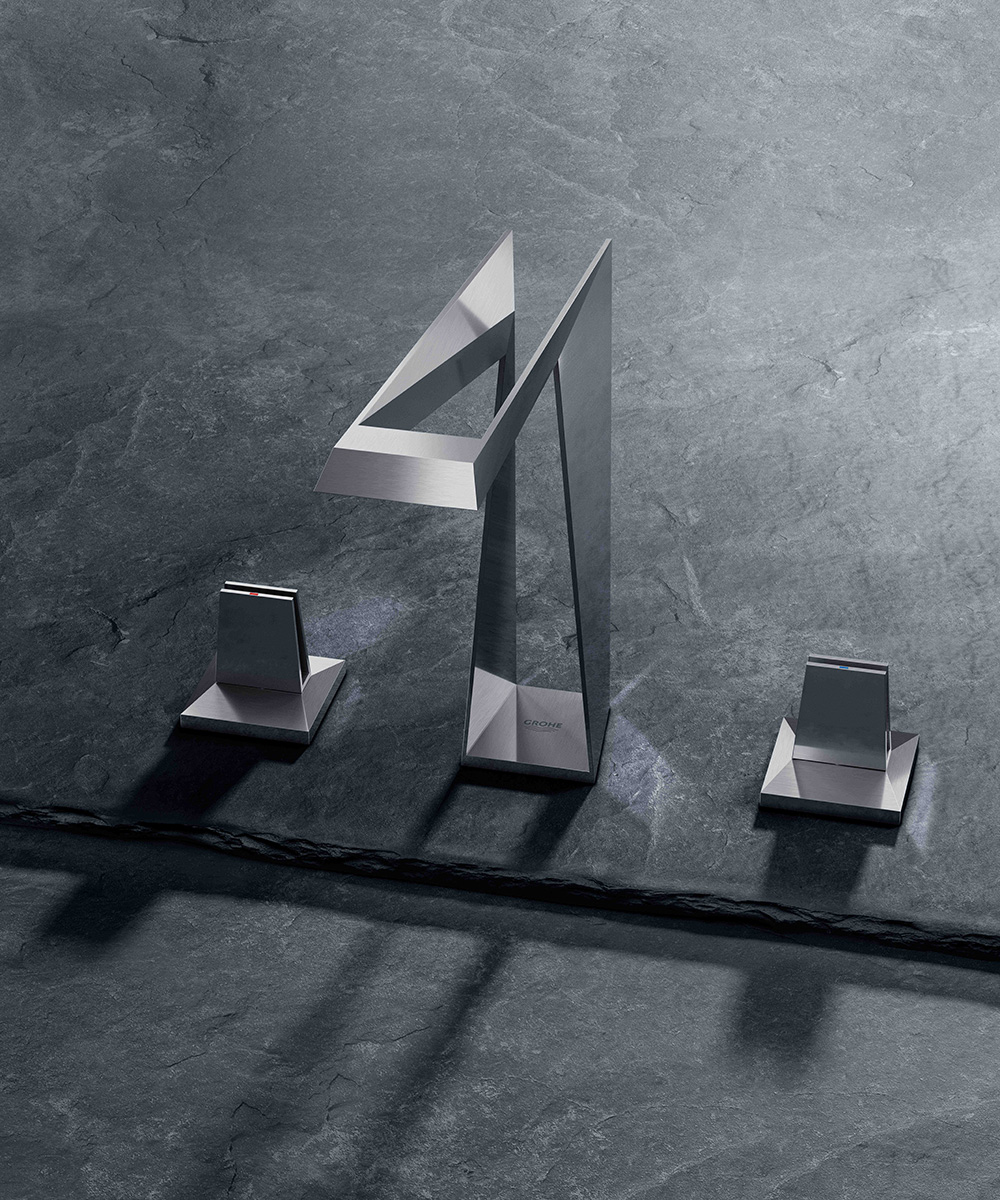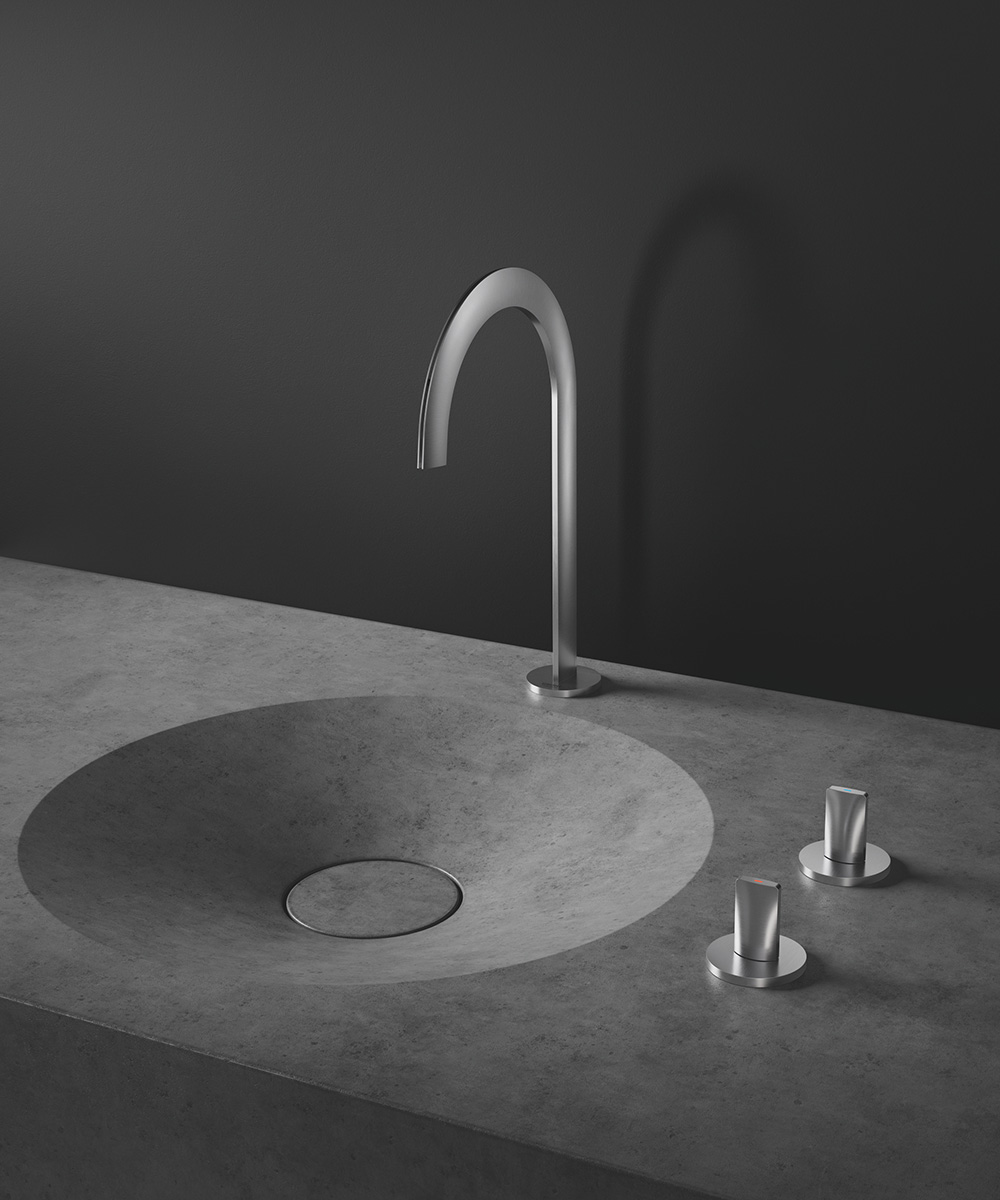Is this the future of design? Grohe presents the first 3D metal-printed tap
The 3D metal-printed tap retails at £12,000.

It would appear that the pandemic hasn't put a halt on creativity, as the future of design looks set to change dramatically. German bathroom and kitchen manufacturer Grohe has used 3D printing to reimagine two of its most popular tap styles. The Icon 3D tap is leading the way when it comes to 3D printing.
The Atrio Icon 3D and Allure Brilliant Icon 3D taps have been crafted using 3D metal-printing, with both models made up of around 4,700 layers of steel that are each 0.06 millimetres thick. The designs are based on the appearance of Grohe's existing Atrio and Allure Brilliant ranges.
See: The future of design: 10 ways interior design will change post-pandemic

Grohe is the first leading sanitary company in Europe to employ the use of 3D printing manufacturing techniques and is hoping it will 'redefine the possibilities' of creating unique bathroom fittings better suited to customers' varying tastes. The company hope to capitalise on the ever-growing need for unique and personalised homeware, a bathroom trend which has really come into its own in 2020.
They also believes that the 3D metal-printing process will result in a more efficient use of materials and thus more refined tap designs. The collection expresses the visionary mission of the company to respond to the individual personalisation that consumers crave.

Ultimately, Grohe is shaping the future of water by applying cutting-edge digital technology with high-quality craftsmanship into its product offering, and it comes at just the right time. Now more ever, consumers are looking to make considered, sustainable and environmentally-friendly purchases. The 3D printing process is entirely bespoke, and no materials are wasted in the process.
‘Every innovation always starts with a bold vision,’ explained Paul Flowers, Chief Design Officer. ‘To re-think what is possible is for us only a question of perspective. With Grohe Icon 3D, we are entering the future of product design as we are now able to create designs that at first appear impossible.'
Design expertise in your inbox – from inspiring decorating ideas and beautiful celebrity homes to practical gardening advice and shopping round-ups.
Grohe’s 3D metal-printing process makes virtually any geometry possible and invites us to rediscover materiality.
By refining the shapes to their bare essentials, the corrosion-resistant steel used as a raw, and at the same time, highly castable material also comes to the fore in the final product. The reduction of the design and the emphasis on the pure essence of the shapes not only saves valuable resources, but also offers a new interactive experience of water.
'By embracing the still-emerging technology of 3D metal-printing, we are pushing the boundaries of design and truly shaping the future of water,' added Paul.
It may well be time to say auf wiedersehen to mass consumerism – a new design classic has arrived!

Jennifer is the Digital Editor at Homes & Gardens, bringing years of interiors experience across the US and UK. She has worked with leading publications, blending expertise in PR, marketing, social media, commercial strategy, and e-commerce. Jennifer has covered every corner of the home – curating projects from top interior designers, sourcing celebrity properties, reviewing appliances, and delivering timely news. Now, she channels her digital skills into shaping the world’s leading interiors website.